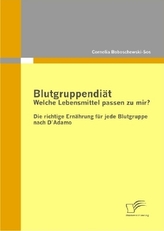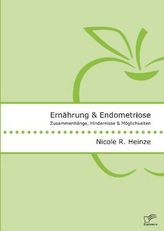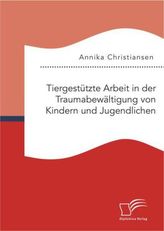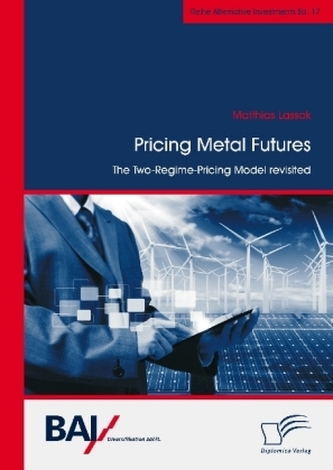Pricing Metal Futures. The Two-Regime-Pricing Model revisited
12
%
629 Kč 716 Kč
Sleva až 70% u třetiny knih
Textprobe:
Chapter 3 Statistical Properties of Metal Prices:
3.1 Data set:
The empirical study uses twofold data sets of London Metal Exchange (LME)'s prices provided by Thomson Reuters's Datastream platform as well as daily U.S. Treasury yield rates. All time series were made available on a daily basis until 4/13/15. The rst data set contains of daily closing cash prices of Al, AlAl, Cu, Pb, Ni, Sn and Zn. Figure 1 depicts the evolution of the respective Metal Cash prices over time. Obviously, most of the examined metals experienced a regime shift during the observation period, which indeed does not go in line with the assumption of mean-reverting commodity prices. In the period before 2000, the prices show a more or less stable mean-reverting pattern. However, starting in 2004/2005, metal prices rose tremendously, which is foremost due to the economical emergence of developing countries, such as Brazil, Russia, India and China (Nappi, 2013). Unsurprisingly, the Financial Crisis of 2008 has lead to a subsequent drop in metal markets. In the aftermath of the Financial Crisis, figgures again rose up to levels surpassing the 90's prices. For Cu, Pb and Sn prices at the end of the last millennium approximately tripled until 2015. In the late 2000s, figures again settled, however, at a greater level with increased variability. Figure 2 shows the evolution of metal prices starting in 01/01/2009. Now, the assumption of mean reversion in metal prices is more reasonable. In order to capture the mentioned regime shift in my analysis, the data prior to 2009 will be excluded. Thus the data set of each of the metals comprises to 1638 observations.
Table 1 provides a brief summary statistic of metal spot price returns. On average, the return of all metals was positive, even summing up to approximately 10% for AlAl and Cu. The estimated annualized volatilities of the price returns vary between approximately 21% and 33% across the different metals. Except of AlAl and Cu, all of the returns are left-skewed. A leptokurtic distribution can be inferred for all metals, as kurtosis is at least 4.7. The second data set comprises continuous futures prices written on the mentioned industrial metals, summing up to 89 time series. In contrast to other exchanges, LME offers their clients daily, weekly and monthly settlement dates for futures contracts of up to three months, six months and over half a year, respectively. The time series of prices analyzed is a continuous moving source by Datastream, where the nearest traded deliverable contract forms the reported futures price. For example, consider the case where the actual date is 8/17/15 and the 12 and 13-months futures contracts are maturing at 8/17/16 and 9/16/16, respectively. Datastream reports the 8/17/16 contract's price as the continuous twelve-months futures price until 9/7/15 - afterwards the continuous twelve-months futures price refers to the contract maturing in September 2016.
Table 2 summarizes the continuous futures in scope. Again, all prices were made available on a daily basis in the observation period 01/01/2009 - 4/13/15. As mentioned in section 1, commodity futures markets exhibit both periods of backwardation and contango. Table 3 presents summary statistics of backwardation for metal futures contracts. It depicts the average, maximum and minimum bases of the respective metal futures. Additionally, the fraction of time, futures prices were backwardated, is presented. On average, Al, AlAl, Pb and Zn were in contango, which can be inferred from an average negative basis. For contracts of up to 18 months, futures of Cu and Ni were on average in contango and longer term maturities were backwardated. Except for one and two-months contracts, the mean term structure of Sn was also backwardated. The proportion of time being in backwardation varies substantially across metals, e.g. whereas Al contracts are at most 10% of the time in backwardation, bases of Cu are at least 30% of the
| Autor: | Lassak, Matthias |
| Nakladatel: | Diplomica |
| Rok vydání: | 2017 |
| Jazyk : | Angličtina |
| Vazba: | Paperback / softback |
| Počet stran: | 96 |
Mohlo by se vám také líbit..
-

Blutgruppendiät
Boboschewski-Sos, Cornelia
-

Ernährung und Endometriose. Zusammenh...
Heinze, Nicole R.
-

Tiergestützte Arbeit in der Traumabew...
Christiansen, Annika
-

Tiergestützte Pädagogik und Therapie:...
Schöll, Christiane
-

Das freie Spiel
Födinger, Diana G.
-

Vegane Ernährung im Säuglings- und Ki...
Rubner, Lisa
-

Der Klassenraum als dritter Pädagoge:...
Hoffmann, Petra
-

Die Welpen-Fibel. Junge Hunde im erst...
Jansen, Karin
-

Weisheiten der Indianer
Probst, Ernst
-

Königinnen der Lüfte
Probst, Ernst
-

Waldkindergarten
Del Rosso, Silvana
-

Rhodesian Ridgeback richtig verstehen
Jansen, Karin





